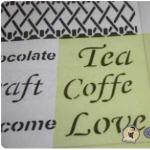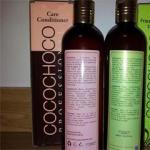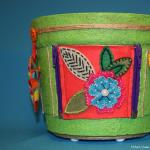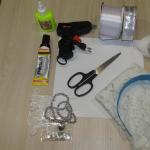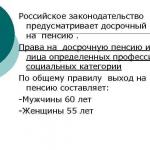D and the magic bag is the goal. Didactic game for children “Wonderful bag”
> Didactic games for children
Didactic game for children “Wonderful bag”
TARGET: teach children to recognize objects by characteristic features.
PROGRESS. When organizing the game, the teacher selects objects familiar to the children. Having seated the children in a semicircle, so that all objects are clearly visible to them, the adult has a short conversation. Then he asks several kids to repeat the names of the objects and answer what they are needed for.
Now we'll play. The one I call must guess what I will put in the bag. Masha, look carefully at the objects that are on the table. Do you remember? Now turn away! I'll put the toy in the bag, and then you can guess what I put. Place your hand in the bag. What's in there? ( Child's answer) You named the item correctly. Other children can be called in this way.
In order to complicate the game, another rule is proposed: several toys are placed in a bag. None of the children know about them. The called child, putting his hand into the bag and feeling for one of the toys, talks about it. The bag will open if the children recognize the toy by the description.
“WONDERFUL BAG”
Didactic task.Teach children to recognize objects by their characteristic features.
Game rules.Guess a familiar object by touch. You can take an object out of the bag and show it only after you have talked about it; the bag does not open if the item is not recognized by the description or is incorrectly named.
Game actions.Feeling an object; making riddles about an object.
Progress of the game. When organizing the game, the teacher selects objects familiar to the children. Having seated the children in a semicircle so that all objects are visible to the children, he conducts a short conversation. Then he asks several children to repeat the name of the object and answer what it is for.
The teacher says:
Now we'll play. Whoever I call must guess what I will put in the bag.
Vasya, look carefully at all the objects that are on the table. Do you remember? Now turn away! I'll put the toy in the bag, and then you can guess what I put. (Places the item in the bag.) Vasya, put your hand in the bag. What's in there? You named the item correctly. And now Vasya will choose someone who will come up to me and also find out what toy I put in the bag.
The game continues until all objects are named.
In this game, memorization processes develop (which toys are on the table) and endurance is developed. Everyone, except the called child, sees what object the teacher put in the bag, everyone wants to give a hint, but this cannot be done.
In order to complicate this game, another rule is proposed: several toys are placed in a bag. None of the children know about them. The called child, putting his hand into the bag and feeling for one of the toys, talks about it. The bag will open if the children recognize the toy (item) by description.
On the topic: methodological developments, presentations and notes
Wonderful bag of Masha doll
Abstract directly educational activities in the second early group, educational field - "Cognition"....
Notes on ecology in the preparatory group. Compiled by: Olga Gennadievna Minina Topic: Conversation “Winter quarters of forest animals” Didactic games: “Wonderful bag”, “Collect a picture of an animal”
Abstract on ecology in preparatory group. ...
In the process of educating children, you can use a very simple didactic game - “Wonderful Bag”. What exactly it is, and when it is most appropriate to carry it out, you will learn from this article.
The goal of the game “Wonderful Bag”
During the game, children learn to determine what kind of object it is based on its characteristic external signs, that is, in form. It can also be used to develop speech and imagination.
Necessary equipment for games- Opaque bag. For kids it is recommended to sew it from bright fabrics (to increase interest in what is happening), and for older children - from dark fabrics.
- Items. They must correspond to a specific theme (vegetables, geometric figures, animals, letters or numbers) and have pronounced differences in shape.
Description of the game “Wonderful Bag”
The meaning of the game is very simple: you need to put your hand in the bag, feel for the object and name it, without seeing what it is specifically. To prevent children from getting confused, you can first put 1 object, and then, when they learn to play like this, several more.

In addition to the main task, players may be given additional ones:

For very young children, you can offer this way to choose a toy with which he will then play. To do this, they are first shown the objects that are placed in the bag, and then each one in turn takes out his own.
This game is suitable for children from 3 years old summer age, when they can already speak and name the object with at least one word. It has no age restrictions, so by complicating the rules, it can be used even in high school.
Types of children's activities: gaming, communicative, cognitive-research, motor.
Goals: to form a kind and caring attitude, emotional responsiveness to the world around us, to develop speech, thinking, fine motor skills, learn to differentiate primary colors (blue, red, yellow).
Masters age-appropriate movements when performing the exercise with balls “Walk along the path”, shows a desire to play the outdoor game “Carousel”, takes part in the game “Magic Bag”, follows the rules of the game, follows the play actions of an adult and peers.
Materials and equipment: screen, bi-ba-bo Granny doll, balls of blue, red, yellow color by the number of children, small toys the same colors as the glomeruli.
Organizing time.
The teacher draws the children's attention to the puppet theater character Grandma Varvarushka (behind the screen), who sings any song familiar to the children. When the children come closer to the screen to look at the doll, the teacher begins the lesson.
Main part. Exercise with balls “Walk along the path.”
Educator (speaks for the doll). Hello guys, come and look what I brought. (The teacher takes the bag and takes out the balls from there.) What is this? (If the children find it difficult to answer, then the grandmother prompts: “balls.”) Take one ball at a time (children choose balls), they are magical, they can turn into multi-colored paths. (The teacher helps the children unwind the balls and make a winding path, shows how to walk along it. When each the child will pass along her path, the grandmother asks the children to wind the string back into a ball. Children put the balls in a bag.)
- Guys, while we were winding up balls, grandma fell asleep. While she is resting, we will also rest and play.
Outdoor game "Carousel"
Children and an adult run in a circle, holding hands. The teacher says or sings:
Barely, barely, barely the carousel spun,
And then, and then everyone runs, runs, runs!
Hush, hush, don't run, stop the carousel.
One and two, one and two, the game is over!
Game "Wonderful bag".
Educator (unbeknownst to the children, he exchanges the bag with balls for the same bag with toys in red, blue, yellow, then speaks again for his grandmother). How well I rested, but where are my balls? (The teacher gives the bag to the grandmother.) And my bag is also not simple, but wonderful. He turned all the balls into toys, do you want to see them? Then take out one toy at a time and say which ball has turned into this toy: blue, red or yellow.
Children, without looking into the bag, take out one toy at a time, name its color and say: “The blue ball has become a fish” or “The yellow ball has become a chicken”, “The red ball has become a ball”, etc.
Reflection.
The children thank Grandma Varvarushka for the toys and say goodbye to her. The teacher organizes a game with toys.
Lesson 4
Russian folk tale"Turnip".
Let's color the turnip
Types of children's activities: gaming, communicative, cognitive-research, musical, visual, perception fiction and folklore.
Goals: introduce the content of the fairy tale “Turnip”; learn to look at illustration drawings, hold a brush correctly, dip it in paint, paint inside the outline, recognize and correctly name the color yellow, improve the ability to understand questions and answer them; enrich your vocabulary; form the correct posture when drawing; to teach to listen to dance music and react emotionally to it, to move in accordance with the nature of the music.
Targets preschool education: takes an active part in productive activities (coloring turnips), listens with interest to the fairy tale “Turnip” performed by the teacher, is active in performing simple dance movements to a Russian folk melody, responds to simple questions according to the content of the fairy tale, performs a simple task of color differentiation.
Musical accompaniment: Russian folk melody “Dance”, arranged by R. Rustamov.
Materials and equipment: illustrations for the fairy tale “Turnip”, a toy mouse, a brush, paints, an easel, a glass of water, a sheet of paper with a drawn turnip or an image cut out of paper, toys of different colors (cubes, cars, etc.), 2 baskets, a natural turnip or a dummy, yellow paint, brushes, sheets of paper with a painted turnip, napkins.
Organizing time.
Educator. Autumn has come. The time has come to harvest. So the heroes of the fairy tale that I’m going to tell you now also gathered in the garden.
Main part. Telling a fairy tale.
Educator. And this story began in the spring. (Tells the fairy tale “Turnip”, h Then he invites the children to look at the illustrations for the fairy tale and asks them to answer questions.) What is shown in the picture? How big is the turnip? Who wanted to pull out a turnip? Who helped him?
Everyone was so happy that they were able to grow such a large turnip and pull it out of the ground that they began to have fun and dance.
Abstract
directly educational activities
in the educational field "Communication"
V middle group MDOU - kindergarten No. 1 “Teremok”
Subject: Didactic game “Wonderful bag”
Target: cognitive-speech and social development children;
Tasks:
1) practice the ability to solve riddles;
2) consolidate knowledge about vegetables and fruits;
3) learn to describe and compare them, agree on definitions and nouns;
4) learn to identify vegetables by their shape by touch;
5) practice counting vegetables within 5;
6) develop logical thinking, tactile sensations; fine motor skills;
7) improve motor movements of children;
8) cultivate friendly relationships and interest in fine art activities;
9) learn to freely arrange images on paper;
10) fulfill the motor needs of children through shifts different types activities.
Integration educational areas: “Cognition” (cognitive-research, FEMP), “Communication”, “ Artistic creativity"(drawing), "Socialization".
Previous work: examination and description of vegetables and fruits. Reading poems, riddles. Story game"Vegetable shop"
Planned results for the development of integrated qualities of a preschooler: uses different ways examination of fruits and vegetables; active when creating an individual composition in the drawing “Canning Fruit”; shows positive emotions when physical activity during physical education. Shows interest in the joint didactic game “Wonderful Bag”; clearly names the objects he takes out of the bag, answers the teacher’s questions, and solves riddles.
Implementation: a wonderful bag, dummies of vegetables and fruits, a wicker basket, a picture of a vegetable garden, pictures of vegetables, gouache, brushes, a jar cut out of paper.
Organization and methodology of conducting direct educational activities.
1. Creating gaming motivation
The teacher brings into the group and shows the children a “wonderful bag”, asks them: “Whose bag is this?”
I am a wonderful bag
You guys, I'm a friend.
I really want to know
What's hidden there again?
Educator:
Guys, how can you find out what's in this bag?
Children: guess, feel, look, get.
2. Game “Wonderful bag”
And in this bag there are different vegetables, but you must find out which ones yourself by putting your hand in the bag and guessing one of them by its shape.
There are different vegetables in the bag. Children must determine by touch what they found in the bag, after first describing the shape and size of the fruit they picked up.
Let's now count how many vegetables were in the bag.
3. Game “Find the vegetables”
In this picture all the vegetables are mixed up, let's sort them out and see where they grow.
Then a picture of a vegetable garden is shown. Children look at it and put it where vegetables grow (underground, above ground).
4. Guessing riddles.
Educator:guys, when do we pick vegetables? (children's answer)
We’ll find out what else autumn has brought us as a gift when we solve the riddles (the children put the guessed fruit on a plate).
I’m sitting on a tree, round like a ball,
Red as blood, sweet as honey. (Cherry)
Balls weigh on the knots
Turned blue from the heat. (Plum)
I'll get the round, ruddy one from the tree
I’ll put it on the plate: “Eat, mommy, I’ll tell you.” (Apple)
5. Physical education lesson “Apple”
The juice is full of sweets. Hands on the belt.
Stretch out your hand, Stretch your hands forward
Pick an apple. Hands up
The wind began to swing the branch, they swing their hands above
It's hard to get an apple
I'll jump, I'll extend my hand
And I’ll quickly pick an apple! Clap your hands above your head
That's an apple! It - Got up. Hands to the side
The juice is full of sweets. Hands on the belt.
6. Productive activity(drawing “canning fruits”).
Children, what can you make from fruits? (compote, jam, juice)
Let's preserve fruit today.
On the table there are cut out jars, gouache, brushes, the children are working.
7. Reflection
1) What game did we play?
2) Name the items that we took out of the bag?
3) What did we ask riddles about?
4) How were the fruits “preserved”?
November 2014


